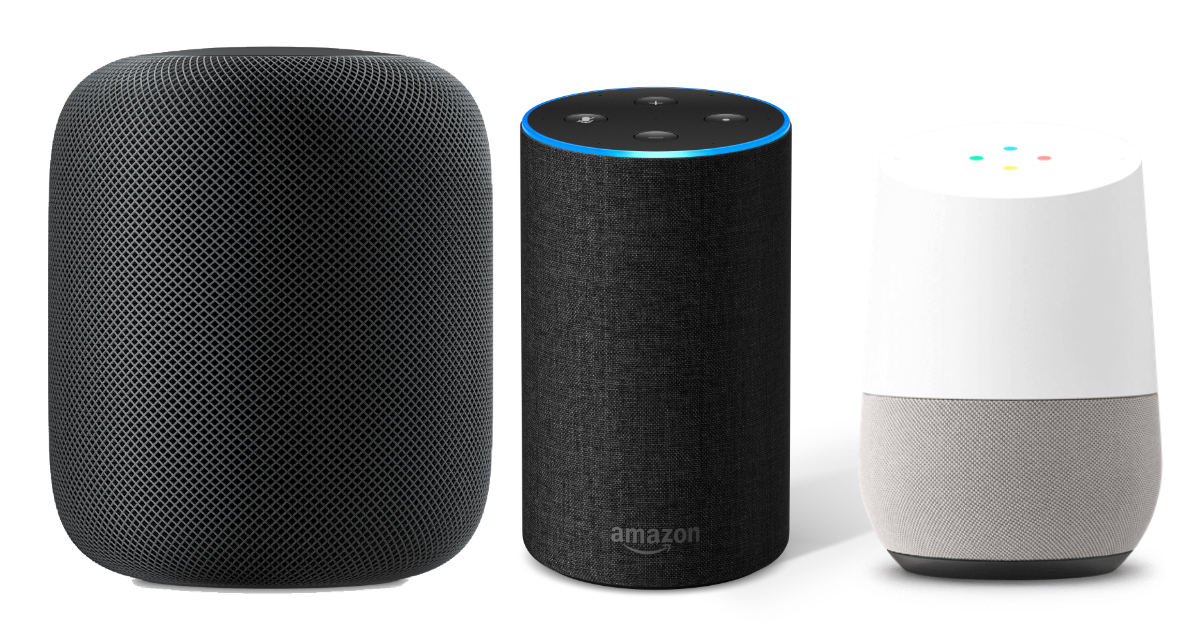Accessibility of Voice User Interfaces and Indoor Navigation for Blind Users
Overview
Voice-activated personal assistants (VAPAs) offer considerable promise for individuals with disabilities in both home environments (e.g., Google Home, Amazon Echo), and for use while on-the-go (e.g., Apple Siri, Microsoft Cortana, in-car assistants). Our research has examined ways these technologies are used on a daily basis, and the challenges that may be faced when attempt to make interactions. The aim is to identify ways to better support users in scenarios where voice represents either the user's preferred medium or is the sole medium available for purposes of interaction.
More recent work is focusing on (i) analyzing the ways in which guidelines have been designed to support interface designers, (ii) examining ways in which "power users" can better influence design, and (iii) using voice for supporting indoor navigation for individuals with and without disabilities.
The work, most recently funded by Toyota, is conducted in conjunction with Dr. Stacy Branham (UCI) and her team of researchers.
Voice User Interfaces (Voice Activated Personal Assistants - VAPAs)

|
VAPA devices (Apple HomePod, Amazon Echo, Google Home - www.medium.com) |
Publications
- Asave, R., Kuber, R. & Hamidi, F. 2024: An Investigation of the Experiences of Orientation and Mobility Trainers in India. In proceedings of W4A'24.
- Vader, M.L., Pineda, M., Hamidi, F. & Kuber, R. 2024: “Pretty Much an Advocate as Well”: Investigating the Experiences of Self-Employed Individuals with Visual Impairments. In proceedings of W4A'24.
- Kuber, R., King, T., Nagraj, A., Vader, M.L., Bendigeri, A. & Wolf, F. 2023: The Design and Evaluation of a Wearable Prototype to Support Non-Visual Wayfinding In proceedings of iConference'23 (Posters).
- Saulynas, S., Vader, M.L., Bendigeri, A., King, T., Nagraj, A. & Kuber, R., 2022: How and Why We Run: Investigating the Experiences of Blind and Visually-Impaired Runners In proceedings of W4A'22, Article No. 25.
- Nagraj, A. Kuber, R., Hamidi, F. & Prasad, R.S.G. 2021: Investigating the Navigational Habits of People who are Blind in India. In proceedings of ASSETS’21, Article No. 33.
- Abdolrahmani, A., Gupta, M., Vader, M., Kuber, R. & Branham, S.M., 2021:Towards More Transactional Voice Assistants: Investigating the Potential for a Multimodal Voice-Activated Indoor Navigation Assistant for Blind and Sighted Travelers. In proceedings of CHI'21, Article No: 495, 1-16.
- Kuber, R., Sinnarkar, S., Gupta, M., Mukkath Roy, A.R. & Abdolrahmani, A., 2021: Organizing an Accessibility-Themed Mini-Hackathon. In proceedings of iConference'21 (Posters).
- Gupta, M., Abdolrahmani, A., Edwards, E., Cortez, M., Tumang, A., Majali, Y., Lazaga, M., Tarra, S., Patil, P., Kuber, R. & Branham, S.M., 2020:Towards More Universal Wayfinding Technologies: Navigation Preferences Across Disabilities. In proceedings of CHI’20, 1-13. DOI: 10.1145/3313831.3376581
-
Abdolrahmani, A., Storer, K.M., Mukkath Roy, A.R., Kuber, R. & Branham, S.M. 2019: Blind Leading the Sighted: Drawing Design Insights from Blind Users towards More Productivity-oriented Voice Interfaces. Transactions on Accessible Computing. Article No. 18. DOI: 10.1145/3368426.
- Gupta, M., Kuber, R. & Branham, S.M., 2019: Towards Identifying and Classifying Navigation Strategies Among Individuals with Diverse Disabilities. In Proceedings of iConference'19 (Posters).
- Mukkath, R., Abdolrahmani, A., Kuber, R. & Branham, S.M., 2019: Beyond Being Human: The (In)Accessibility Consequences of Modeling VAPAs After Human-Human Conversation. In proceedings of iConference'19 (Posters).
- Abdolrahmani, A., Mukkath Roy, A.R., Kuber, R. & Branham, S.M. 2018: Blind People Are Power Users: An Argument for Centering Blind Users in Design of Voice Interfaces . In Proceedings of Accessible Voice Interfaces Workshop at CSCW'18.
- Abdolrahmani, A. Kuber, R., & Branham, S.M., 2018: "Siri Talks at You": An Empirical Investigation of Voice-Activated Personal Assistant (VAPA) Usage by Individuals Who Are Blind. In Proceedings of ASSETS’18, 249-258.
Students
- Ali Abdolrahmani (Ph.D.)
- Apoorva Bendigeri (MS)
- Rishin Mukkath Roy (MS)
- Anirudh Nagraj (MS)
- Shivani Sinnarkar (MS)
- Maya Gupta (BS)
- Marc Lazaga (BS)
- Yasmin Majali (BA)
- Mei Lian Vader (BS)
